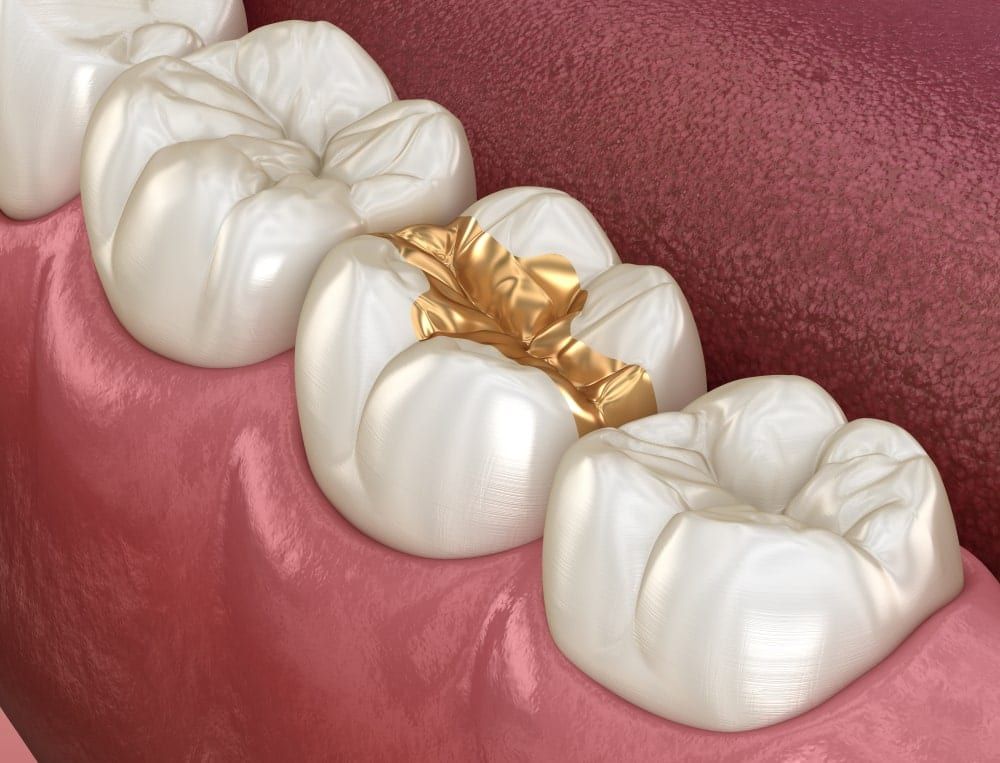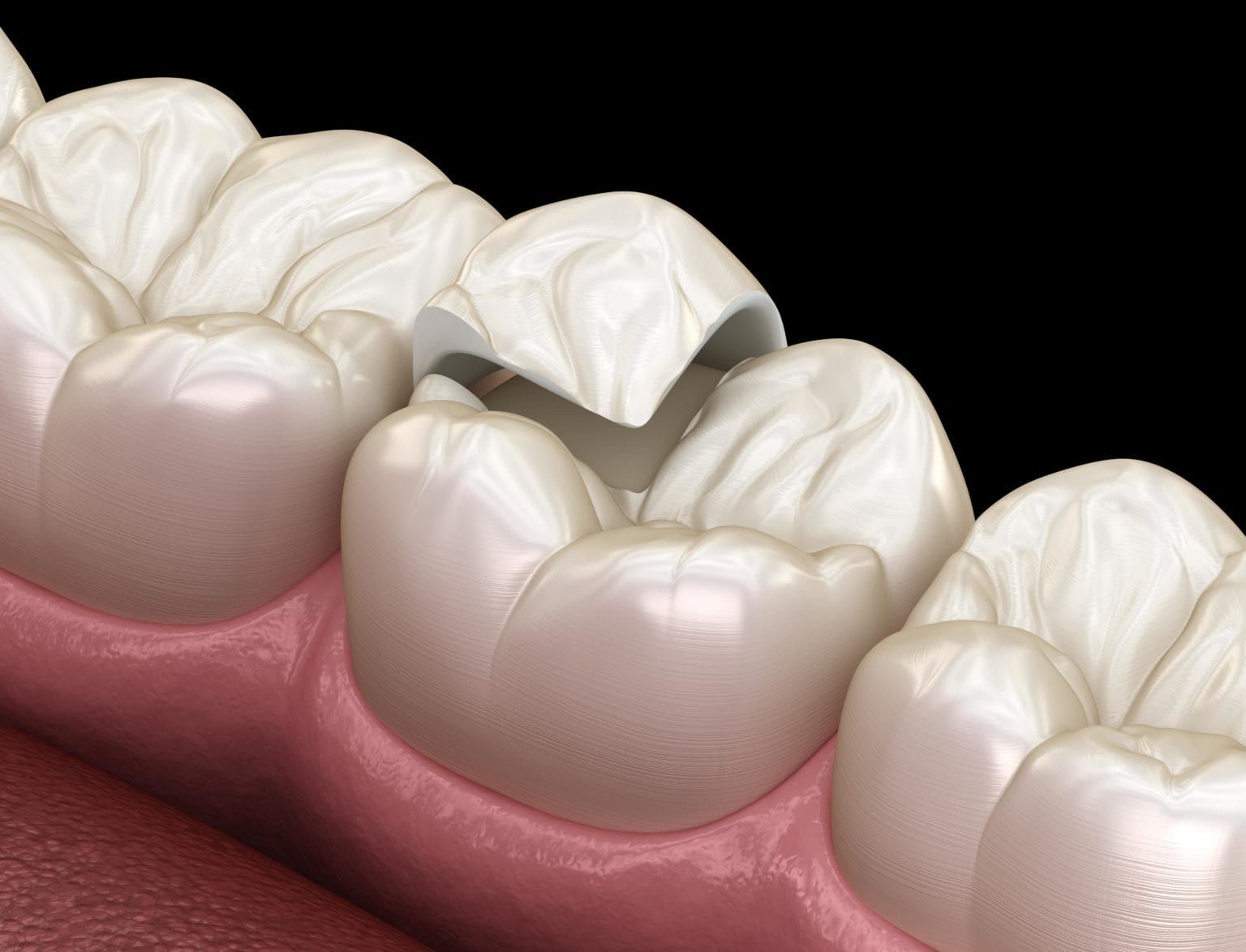When it comes to preserving the health and beauty of your teeth, Dr. Bustos at 3D Dentistry in Bradenton, FL, offers a range of effective solutions, including inlays and onlays. These dental restorations are designed to repair damaged or decayed teeth, providing both aesthetic appeal and functionality.
Inlays and onlays, also known as indirect fillings, are dental restorations used to restore teeth with minimal to moderate areas of damage or decay. They are fabricated by a dental laboratory before being bonded to the affected area of the tooth. Since they are customized for each patient, they help to preserve the natural tooth structure, strengthen the tooth, and restore the tooth’s function. An inlay is generally placed over the center of the tooth, while an onlay is usually placed on the center as well as one or more of the tooth’s points.
Did You Know?
Inlays and onlays can be made using gold, resin, or porcelain. Since both dental materials offer different benefits and drawbacks, it is important to discuss your options with your dentist to determine which dental material would best suit your needs.
Common Symptoms
You may need inlays or onlays if you experience:
- Tooth pain or sensitivity
- Visible tooth decay or damage
- Discoloration or staining
- Weakened tooth structure
- Difficulty chewing or biting
Why Inlays and Onlays?
Inlays and onlays are excellent alternatives to traditional fillings or crowns. They are used when a tooth has mild to moderate damage or decay, offering a conservative yet durable solution. These restorations are custom-made to fit precisely into the affected area, providing strength and support while maintaining the natural appearance of your tooth.
Treatment Process
Examination: Dr. Bustos will conduct a thorough examination, including digital imaging if necessary, to assess the extent of the damage or decay.
Preparation: The damaged portion of the tooth is carefully removed, leaving healthy tooth structure intact.
Impression: A precise impression of your tooth is taken to create a custom inlay or onlay that fits perfectly.
Temporary Restoration: While your custom restoration is being crafted, a temporary restoration will be placed to protect your tooth.
Fitting: Once your inlay or onlay is ready, Dr. Bustos will ensure a precise fit and make any necessary adjustments.
Bonding: The final restoration is securely bonded to your tooth, providing strength and protection.
Prevention
Maintaining good oral hygiene practices, such as regular brushing, flossing, and dental check-ups, is essential to prevent the need for inlays and onlays. Avoiding excessive sugar intake and protecting your teeth during physical activities can also contribute to a healthy smile.
Outlook
With proper care, inlays and onlays can last for many years, providing a durable and aesthetically pleasing solution for damaged or decayed teeth. Dr. Bustos will advise you on the best practices to maintain the longevity of your dental restorations.
Frequently Asked Questions:
Am I a candidate for an inlay or onlay?
Candidates for inlays or onlays are individuals who have one or more teeth with minimal to moderate damage or decay. If the damage or decay is in the center of the tooth, a dental inlay will usually be recommended. Dental inlays also work well for restoring cavities between the teeth because they seal out bacteria better than a composite filling. However, if the damage or decay affects one or more of the tooth’s cusps, then a dental onlay may be recommended instead. Dental onlays can also be used to strengthen weak areas of the tooth. To determine if you are an ideal candidate for a dental inlay or onlay and which is right for you, schedule a consultation with your dentist today.
What can I expect when having an inlay or onlay placed?
When having an inlay or onlay placed, you can expect to have two dental appointments. The first appointment allows your dentist to prepare your tooth by removing any damaged or decayed tissue. Then a dental impression or oral scan will be taken and sent to the dental lab so they can custom fabricate your restoration. After that, a temporary inlay or onlay will be placed to protect your tooth until your restoration is complete.

During your first appointment, your dentist may also discuss the dental materials available for your restoration. Although inlays and onlays can be made from gold, resin, or porcelain, it can be hard to know which is best. Gold is ideal for durability, porcelain is ideal for aesthetics, and resin is ideal for individuals who have bruxism or malocclusion.

After about 1-2 weeks, you will attend your second dental appointment to have your temporary restoration removed and your permanent restoration placed. Before cementing your inlay or onlay in place, your dentist will check its fit, as well as how it interacts with your bite.
How do I take care of my inlay or onlay?
Taking care of your temporary inlay or onlay is actually slightly harder than taking care of your permanent inlay or onlay. This is because temporary restorations are not nearly as strong as permanent restorations and can fall out or become damaged much easier. Therefore, you are recommended to chew on the opposite side of your mouth and avoid hard, chewy, and sticky foods.
Once you have your permanent inlay or onlay, you will care for it the same way you would care for your natural teeth. This means brushing your teeth twice a day, flossing daily, and scheduling regular dental exams and cleanings every 6 months. Additionally, to prevent damage to your restoration, you will need to avoid habits like chewing on ice or pens, biting your nails, and using your teeth as tools to open or hold things.
Your Path to a Healthier Smile
At 3D Dentistry in Bradenton, FL, we are dedicated to helping you achieve and maintain optimal oral health. If you believe you may need inlays or onlays or have any questions, don’t hesitate to reach out to Dr. Bustos at 941-253-2300 for a personalized consultation. Let us restore your smile’s beauty and functionality with precision and care.

